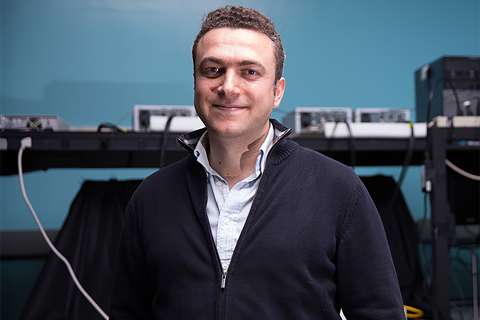Last updated 11/17/2022.
Lung cancer is the third most common cancer in the United States. It kills more patients each year than any other cancer, with the death rate from lung cancer greater than that of colon, breast and prostate cancers combined. Lifestyle factors, in particular smoking, play an important role with an estimated 80% to 90% of lung cancer deaths linked to cigarette smoking.
While not all lung cancers are caused by cigarette smoking, quitting the habit—or never starting—is an important part of cancer prevention. For high-risk current and former smokers, lung cancer screening and early detection can significantly improve outcomes.
A new report from the American Lung Association reveals that as few as 5.8% of eligible Americans were screened for lung cancer in 2021, and that certain states, including California, had screening rates closer to 1%.
Currently, the only recommended method for lung cancer screening is low-dose computed tomography (CT) scanning, a quick, non-invasive diagnostic test that uses just 25% of the radiation of a standard diagnostic CT scan of the chest.
“The radiation required for a screening CT is comparable to the background radiation we can expect to receive over six months as part of everyday life (without undergoing imaging), as compared to two years of background radiation for a routine CT,” explains Ashley Prosper, MD, a radiologist specializing in thoracic and diagnostic cardiovascular imaging, co-director of the UCLA Lung Screening Program and a member of the UCLA Jonsson Comprehensive Cancer Center.
The radiation dose may be low, but the test is extremely sensitive, capable of identifying potentially cancerous nodules or lesions within the lungs years before the onset of symptoms. This provides valuable time that improves both the success of treatment and expands the range of therapeutic options.
“By detecting lung cancer in its earlier stages, we open the door to treatment options that might not be available, or may be less effective, later on,” Dr. Prosper says.
Screening guidelines
UCLA was an early adopter of low-dose CT lung cancer screening. In fact, the National Lung Screening Trial (NLST), the randomized clinical trial involving over 50,000 participants that validated the efficacy of the method beginning back in the early 2000s, was led by Denise Aberle, MD, a UCLA radiologist and member of the Jonsson Comprehensive Cancer Center.
Each year, the UCLA Lung Screening Program scans approximately 1,500 patients, but Dr. Prosper and her colleagues say that many more patients are eligible—and hope to eventually screen all of them.
Based on a change in the screening guidelines issued by the United States Preventive Services Task Force (USPSTF) in March 2021, eligibility now extends to patients who:
- Smoke now or have quit within the past 15 years
- Are between the ages of 50 and 80 (the recommendation was previously 55 and over)
- Have at least a 20-pack-year smoking history (previously 30-pack-years)
Private insurers rapidly aligned with the updated guidelines, although an expansion of Medicare and Medi-Cal coverage required a national coverage determination update from the Centers for Medicare and Medicaid Services (CMS), which occurred in February 2022.
In the United States, an estimated 14.5 million Americans are now eligible.
Reducing disparities
“Many studies provided evidence that the initial screening guidelines were not sufficiently inclusive,” Dr. Prosper says. “This expansion has significantly increased eligibility for both high-risk women and racial minorities.”
The expansion in lung screening eligibility, Dr. Prosper points out, is a step toward alleviating current lung cancer disparities, including those seen in the African American community.
Currently, Black men and women are less likely to be diagnosed at an early stage when more treatment options are available. For reasons not yet understood, Black men develop lung cancer and die from it more frequently than any other demographic group, despite on average smoking less than white men.
“Fortunately, lung screening with low dose CT is highly effective in reducing the rate of lung cancer deaths and has been shown to be particularly effective in decreasing lung cancer deaths in the African American community,” Dr. Prosper says.
Indeed, in a secondary analysis of data collected by the NLST, despite being at highest risk, Black patients who participated in low-dose CT screening programs experienced the greatest reduction in lung cancer mortality of any group.
In a study led by Dr. Prosper and her colleagues—reported in the journal JAMA Network Open in August 2021—increasing the number of Black participants in low-dose screening programs to reflect the share of Black individuals in the overall U.S. population significantly improved the mortality reductions across a screened population.
“Lung screening with low-dose CT is an incredibly effective exam that we must ensure is made available to all those who are eligible, and a very important tool in combating current lung cancer disparities,” she says.
Learn more about screening for lung cancer at UCLA Health.




